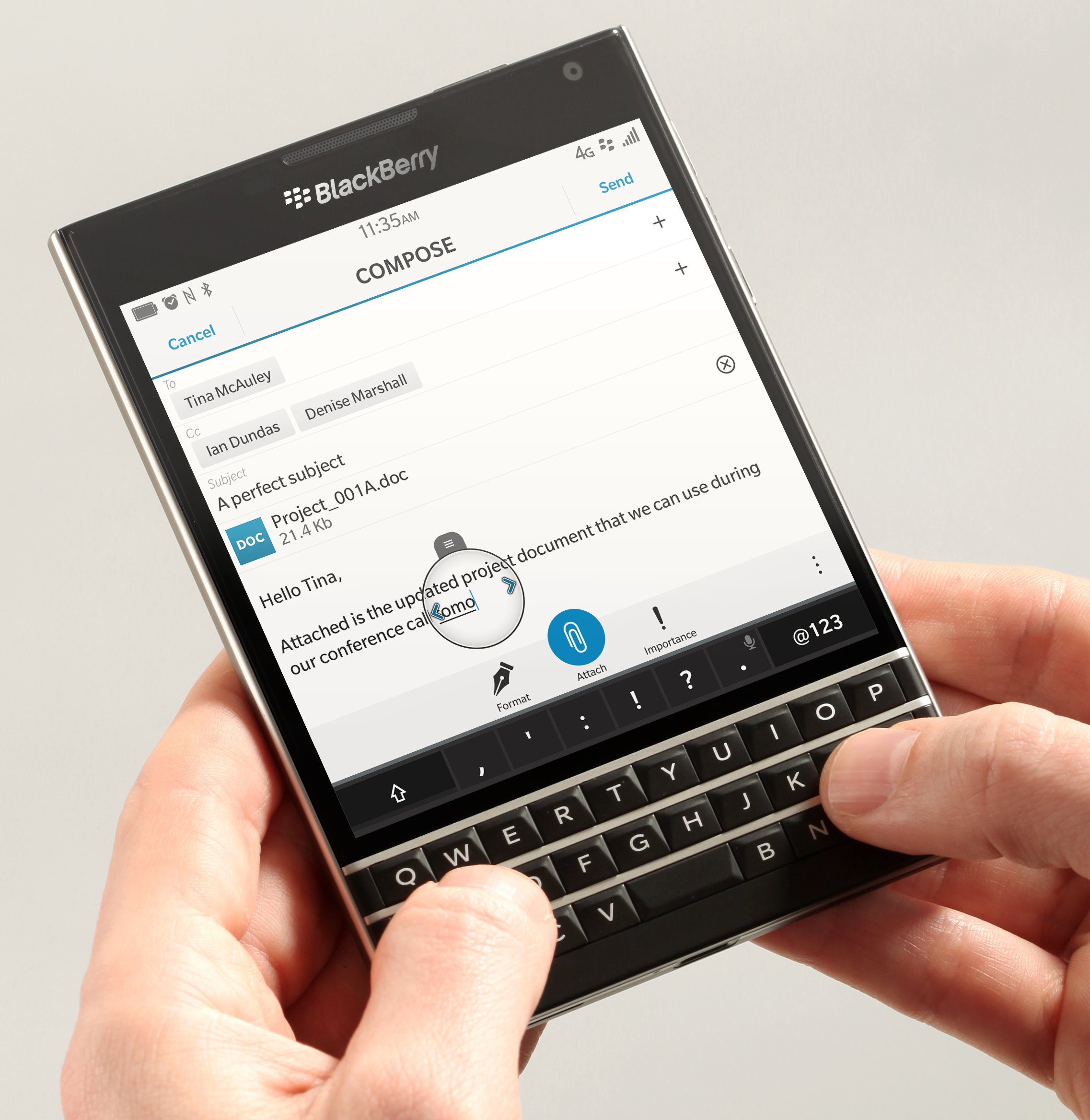BlackBerry Passport Touch Keyboard
Role
Co-Inventor & UX Designer/Developer
Date
2014
Category
Design, Developer, MobileThe touch-enabled keyboard of the BlackBerry Passport was the most notable innovation that I was a part of at BlackBerry, where I designed and prototyped its input system. It united two of my projects, a touch-enabled keyboard and a hybrid virtual/physical 3-row keyboard, in an innovative new input model. The Passport was an unorthodox phone – with a big square screen and a simplified keyboard – but was much beloved by its users, achieving the highest Net Promoter Score of any BlackBerry (don’t quote me on that).
Capacitive Touch Keyboard
I was part of a small, rogue team responsible for executing seemingly “impossible” ideas. The capacitive touch keyboard was one such idea. It involved a standard capacitive sensor array, cranked up to sense through the keypad’s surface. This enabled coarse gestures to be performed across the keyboard, and was later tuned to locate fingers at a per-key resolution. See the videos for some of the cool features we invented like: flick to type, swipe to delete, scrolling from the keyboard, advanced character entry, fine cursor control, and more.
Three Row Keyboard
The three-row keypad was driven by the desire to turn a device from the standard 50-50 keyboard/screen split to a 30-70 split. We reduced the keyboard down to the barest essentials, A-Z, space, enter and delete, and reduced the number of rows needed from 4 to 3. Additional keyboard functionality was provided by a “virtual fourth row”, which adapted based on the context, or disappeared when it is not needed.
A long-burning project, these keyboards underwent multiple prototype iterations in multiple languages (Flash Builder, Native, Android) until it was mature enough for release on a production device.



